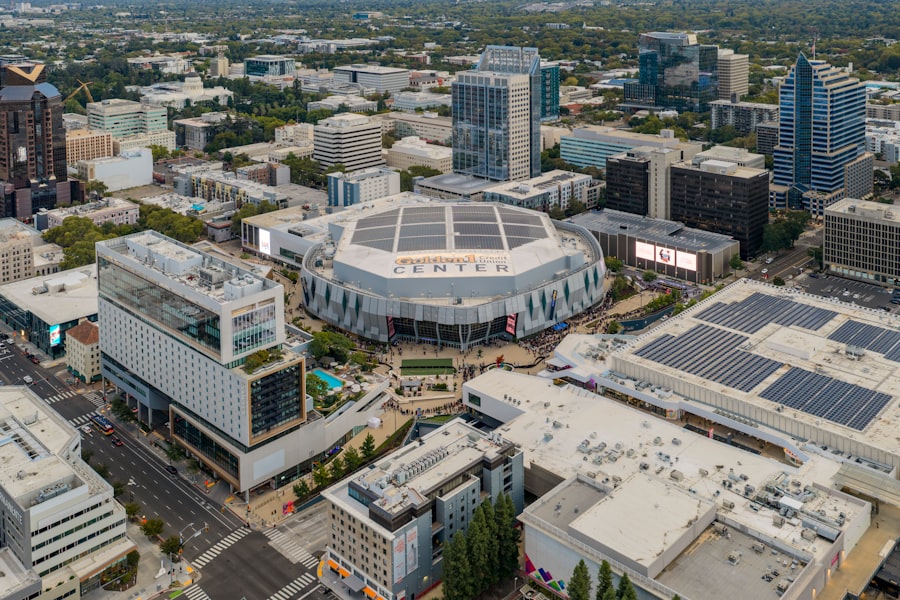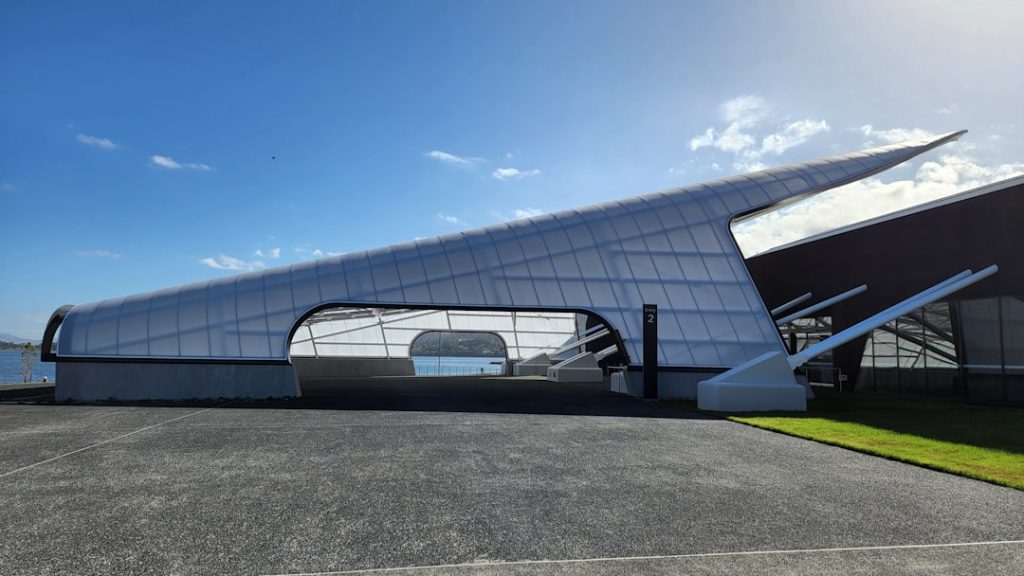A built-in entertainment center serves as a focal point in a living space, seamlessly integrating technology with design. One of the primary benefits of such a structure is its ability to maximize space efficiency. Unlike freestanding furniture, which can often disrupt the flow of a room, a built-in unit can be tailored to fit the specific dimensions of a wall or alcove.
This custom fit not only enhances the aesthetic appeal but also allows for better organization of electronic devices, books, and decorative items. By utilizing vertical space, homeowners can create an illusion of a larger area while ensuring that everything has its designated place. Moreover, built-in entertainment centers can significantly enhance the overall value of a home.
Potential buyers often view these features as desirable upgrades, as they suggest a level of sophistication and attention to detail in the home’s design. A well-crafted entertainment center can elevate the ambiance of a room, making it more inviting and functional. Additionally, these units can be designed to accommodate future technology upgrades, ensuring that the investment remains relevant as new devices emerge.
This adaptability not only serves current needs but also positions the home favorably in the real estate market.
Key Takeaways
- Built-in entertainment centers enhance room aesthetics and optimize space usage.
- Careful layout design ensures the entertainment center fits perfectly and functions well.
- Selecting quality materials and finishes contributes to durability and style.
- Incorporating smart storage solutions helps maintain a clutter-free environment.
- Integrating technology and multi-purpose features creates a seamless and functional entertainment experience.
Designing the Perfect Layout for Your Space
When embarking on the journey to design a built-in entertainment center, the layout is paramount. The first step involves assessing the dimensions of the room and identifying key focal points, such as windows and existing furniture. A well-thought-out layout should consider sightlines and traffic flow, ensuring that the entertainment center does not obstruct movement or create awkward viewing angles.
For instance, if the television is to be the centerpiece, it should be positioned at eye level from the primary seating area to enhance comfort during viewing. In addition to functionality, the layout should reflect the homeowner’s lifestyle and preferences. For families who enjoy movie nights or gaming sessions, incorporating ample seating and perhaps even a small snack bar can transform the space into an entertainment hub.
Conversely, for those who prefer a more minimalist approach, a sleek design with hidden compartments for devices may be more appealing. The layout should also allow for flexibility; modular designs that can be adjusted or expanded over time can accommodate changing needs without requiring a complete overhaul.
Choosing the Right Materials and Finishes

Selecting appropriate materials and finishes is crucial in creating a built-in entertainment center that is both visually appealing and durable. Wood remains a popular choice due to its timeless elegance and versatility. Different types of wood, such as oak, maple, or walnut, offer varying grains and colors that can complement any interior design style.
For a modern aesthetic, sleek laminates or engineered wood can provide a clean look while being resistant to scratches and stains. In addition to wood, incorporating glass elements can enhance the overall design by adding depth and sophistication. Glass shelves or cabinet doors allow for visibility of decorative items while maintaining a sense of openness.
Furthermore, finishes play a significant role in the durability and maintenance of the entertainment center. High-quality paints or stains not only protect the wood but also contribute to the overall aesthetic. Matte finishes may lend a contemporary feel, while glossy finishes can add a touch of luxury.
Ultimately, the choice of materials should align with both personal taste and practical considerations.
Incorporating Storage Solutions for a Clutter-Free Space
| Storage Solution | Space Efficiency | Cost Effectiveness | Ease of Installation | Maintenance Level | Ideal Use Case |
|---|---|---|---|---|---|
| Floating Shelves | High | Moderate | Easy | Low | Display and small items |
| Under-bed Storage | Very High | High | Easy | Low | Seasonal clothing and shoes |
| Built-in Cabinets | Very High | Low | Complex | Moderate | Long-term storage and organization |
| Storage Ottomans | Moderate | Moderate | None (ready to use) | Low | Living room and multi-purpose storage |
| Wall-mounted Hooks | Moderate | High | Easy | Low | Coats, bags, and accessories |
| Modular Storage Units | High | Moderate | Moderate | Moderate | Customizable storage needs |
A well-designed built-in entertainment center should prioritize storage solutions that promote organization and minimize clutter. With the proliferation of electronic devices, games, and accessories, having designated storage areas is essential for maintaining an orderly environment. Open shelving can be used for displaying books or decorative items, while closed cabinets can conceal less visually appealing items such as cables and gaming consoles.
Incorporating drawers into the design can further enhance functionality by providing easy access to frequently used items like remote controls or board games. Additionally, utilizing vertical space with tall cabinets or shelves can maximize storage without sacrificing floor space. For those who wish to keep their entertainment area tidy, integrating hidden compartments for wiring and cables is crucial.
This not only improves aesthetics but also reduces safety hazards associated with tangled cords.
Integrating Technology for a Seamless Entertainment Experience
In today’s digital age, integrating technology into a built-in entertainment center is essential for creating a seamless experience. Smart home technology has revolutionized how we interact with our devices, allowing for remote control and automation of various functions. Incorporating features such as built-in speakers or sound systems can enhance audio quality while maintaining a clean look without visible wires.
Moreover, cable management systems are vital in ensuring that all devices are connected without creating an unsightly mess. This can include hidden conduits within the structure that allow cables to run discreetly from devices to power sources. Additionally, considering future technology upgrades during the design phase is important; leaving space for additional devices or incorporating adjustable shelving can accommodate new gadgets as they become available.
Customizing Your Entertainment Center to Fit Your Needs

Customization is one of the most significant advantages of a built-in entertainment center. Every household has unique needs based on lifestyle, preferences, and available space. For instance, families with children may prioritize safety features such as rounded edges or secure storage for fragile items.
In contrast, individuals who enjoy hosting gatherings might opt for additional seating or integrated beverage coolers. Furthermore, personalization extends beyond functionality; aesthetic choices such as color schemes and decorative elements should reflect the homeowner’s style. Whether opting for a rustic farmhouse look with distressed wood finishes or a sleek modern vibe with metallic accents, customization allows homeowners to create an entertainment center that feels uniquely theirs.
Collaborating with designers or utilizing design software can help visualize these ideas before implementation.
Maximizing Functionality with Multi-Purpose Features
To truly maximize functionality in a built-in entertainment center, incorporating multi-purpose features is key. For example, integrating a fold-out desk within the unit can provide an ideal workspace without requiring additional furniture that may clutter the room. This feature is particularly beneficial in smaller spaces where every square foot counts.
Another innovative approach is to include convertible seating options that can serve dual purposes—such as ottomans that provide storage while also acting as extra seating during gatherings. Additionally, incorporating lighting features such as LED strips can enhance ambiance while serving practical purposes like highlighting artwork or providing task lighting for reading areas. These multi-functional elements not only optimize space but also enhance the overall user experience.
Maintenance and Care Tips for Long-Lasting Durability
To ensure that a built-in entertainment center remains functional and visually appealing over time, proper maintenance and care are essential. Regular dusting and cleaning are crucial in preventing buildup that can damage finishes or electronics. Using microfiber cloths and gentle cleaning solutions will help maintain surfaces without causing scratches or discoloration.
Additionally, periodic checks on electronic components are advisable to ensure everything is functioning correctly. This includes inspecting cables for wear and tear and ensuring that ventilation systems are unobstructed to prevent overheating of devices. For wooden surfaces, applying protective coatings or polishes periodically can help preserve their luster and protect against moisture damage.
By following these maintenance tips, homeowners can enjoy their built-in entertainment centers for years to come while keeping them looking fresh and new.



